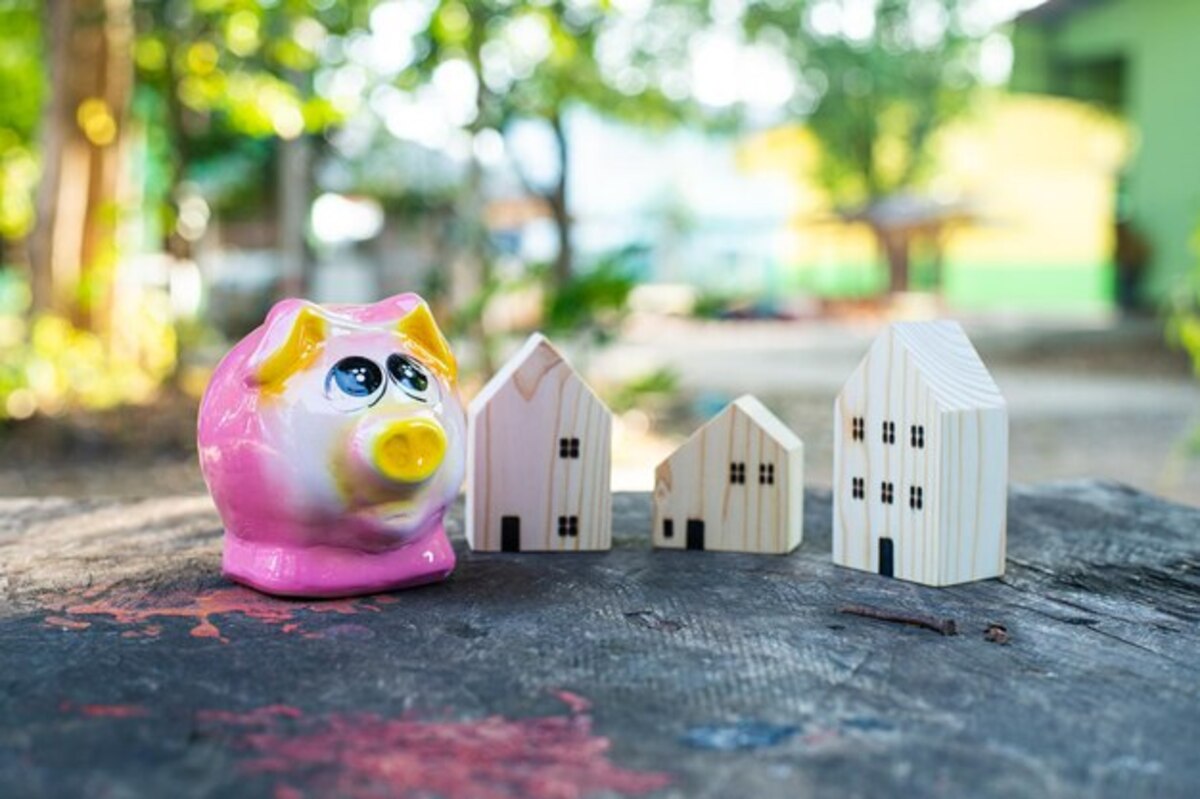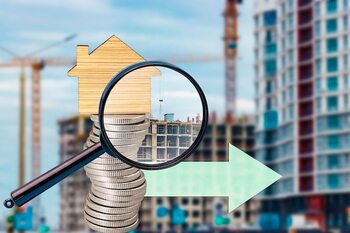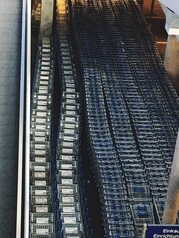Unexpected factors that increase the value of your home

Have you ever wondered what factors can increase the value of your home beyond its structure and design? In this article, we will explore unexpected aspects that, although often overlooked, can enhance the value of your property. From the quality of nearby services to the neighborhood atmosphere, every detail matters in attracting potential buyers or tenants. Join me on this journey to discover how to improve your investment without major renovations, and maximize your home's potential!
Discovering the unexpected factors that elevate the value of your home can be the key to maximizing your investment. In both rural and urban areas, the elements that influence a property's value go beyond the obvious. From accessibility to services to development potential, understanding how these aspects intertwine will allow you to make informed and strategic decisions when buying or selling. Dive into this fascinating analysis of how every corner can impact your wealth.
The importance of location: rural or urban?
The importance of nearby schools and their impact on families.
The proximity of quality schools is a determining factor that influences the purchasing decision of many families. When parents look for a home, one of their priorities is to find a residence that is close to recognized educational institutions. This not only saves them time and money on commutes but also provides peace of mind knowing that their children have access to a proper education. Properties located in valued school districts tend to maintain their appreciation and, in many cases, experience a significant increase in value over time, as the demand for these homes is usually high.
The location of a property is one of the most determining factors in its valuation, and the choice between a rural or urban environment can have a significant impact on the future of the property. In urban areas, proximity to essential services such as schools, hospitals, and shopping centers often increases the value, as buyers appreciate convenience and access to job opportunities. Additionally, public transportation infrastructure and road connections play a crucial role in the purchasing decision, thereby increasing demand in these metropolitan areas.
On the other hand, the appeal of rural properties has been increasing in recent years, especially for those looking to escape the urban hustle and opt for a quieter lifestyle. The possibility of enjoying vast outdoor spaces, natural landscapes, and a more close-knit community has led many people to reconsider their housing priorities. However, it is essential to evaluate factors such as access to basic services and the potential for future developments in these areas, as these elements can influence both positively and negatively the long-term value of a rural property. Thus, both urban and rural areas present unique opportunities that can be strategically leveraged to maximize your real estate investment.
In addition to the practical aspect, living near good schools also impacts the overall perception of the neighborhood. Families with children often seek safe and friendly environments where they can socialize and grow, which increases the area's appeal. The presence of nearby schools can foster a sense of community, attracting more buyers interested in settling there. Consequently, homes located near educational centers benefit not only from their intrinsic value but also from the stability and dynamism of the local real estate market. This makes proximity to schools a key factor for those looking to maximize their home's appreciation without the need for costly renovations.
2. Access to public transportation: connectivity that adds value.
2. Access to services and its impact on added value
Access to essential services is a factor that can make a significant difference in the value of a property. When a home is located near schools, hospitals, supermarkets, and public transportation, its appeal increases considerably. Buyers often value these amenities as they offer the promise of a more convenient and efficient lifestyle. Therefore, properties located in areas with good connectivity to these services tend to maintain or increase their value over time, becoming a more attractive option for future transactions.
Access to public transportation is a crucial factor that not only facilitates the daily life of residents but also directly impacts the value of a property. Areas well connected by trains, buses, or trams tend to be more attractive to buyers and renters, as they offer convenience and savings on travel time. When prospective homeowners consider a property, proximity to transportation stations becomes a decisive element; this is especially true in large cities where traffic can be a constant challenge. A good connection to public transportation can transform an ordinary neighborhood into a highly desirable one.
Moreover, the impact of public transportation goes beyond mere convenience. The availability of these routes can indicate a strong investment in infrastructure by the local government, which can translate into a sustained increase in real estate value. Transportation expansion and modernization projects often attract new businesses and services to the area, creating a dynamic environment that benefits both residents and investors. In this sense, assessing the available transportation network not only provides a practical insight into daily life but also into the future economic potential of the home.
Additionally, the development of new infrastructure can dramatically transform the perception of an area. The arrival of new subway or bus lines, for example, not only improves mobility but also attracts additional businesses and services to the area. This phenomenon creates a domino effect in the real estate market: as more people are drawn to the benefits of improved access, the demand for properties in those locations increases. Thus, investing in areas where infrastructure improvements are anticipated can be especially lucrative for those looking to maximize their wealth in the long term.
3. The influence of the natural environment on rural properties
3. Proximity to shopping centers: convenience and appeal for shoppers.
Proximity to shopping centers has become a determining factor for many buyers when evaluating a property. These spaces not only offer a variety of stores and services, such as supermarkets, restaurants, and entertainment, but also provide convenience and accessibility. Living close to a shopping center means being able to do daily shopping without having to travel long distances, which is especially appealing to families, busy professionals, and elderly individuals who value their time. This convenience translates into higher demand for housing in that area, which increases its value.
The influence of the natural environment on rural properties is a fundamental aspect that is often overlooked, but it can make a significant difference in the value of a property. Proximity to bodies of water, mountains, or nature reserves not only beautifies the landscape but also attracts buyers interested in a healthier and more sustainable lifestyle. Rural areas with access to hiking trails, outdoor sports areas, or diverse ecosystems are often highly valued. This natural appeal not only enhances the quality of life for residents but also increases interest in purchasing those properties.
Additionally, the natural environment directly impacts agriculture and sustainable development in the area, which can be a decisive factor for many buyers. The quality of the soil, the availability of water, and favorable climatic conditions are aspects that enhance the agricultural and economic potential of a rural property. On the other hand, local conservation and sustainability initiatives can turn these areas into desirable destinations for those looking to escape urban hustle. Consequently, investing in rural properties within well-preserved natural environments translates not only into a more pleasant home but also into a solid long-term investment.
In addition to practical convenience, shopping malls are often social meeting points where community events and recreational activities take place. The possibility of enjoying experiences like outdoor cinemas, local fairs, or food festivals makes living close to these places even more desirable. This vibrant environment can attract a diverse range of potential buyers, from young professionals to families with small children. At the end of the day, proximity to a shopping mall not only increases the functionality of the home but also adds an emotional appeal that can make your property more competitive in the real estate market.
4. The influence of parks and recreational areas on property value.
4. Urban development: hidden opportunities for value increase
Urban development presents a series of opportunities that, although often overlooked, can be crucial for increasing the value of your home. The transformation of a neighborhood with infrastructure projects such as new schools, parks, or shopping centers can significantly elevate the area's appeal. These changes not only improve the quality of life for residents but also attract new buyers seeking convenience and accessibility to services. Therefore, keeping an eye on urban initiatives in your locality can provide you with insights into the future potential of your property's value.
Proximity to parks and recreational areas can be a determining factor in the appreciation of a property. These spaces not only provide opportunities for leisure but also contribute to the overall well-being of their inhabitants. A neighborhood with access to green areas is often associated with a healthier lifestyle, which is appealing to both families and active individuals. The possibility of enjoying outdoor activities such as hiking, picnics, or sports adds significant value to the home and can influence the purchasing decision of potential buyers.
Furthermore, parks and recreational areas foster a sense of community among residents, which is another aspect that can increase property value. Spaces where families can gather and children can play create a welcoming and friendly atmosphere. This social interaction not only enhances the quality of life in the neighborhood but also makes the property more desirable in the real estate market. Buyers often value not only the property itself but also the environment in which it is located; therefore, having access to recreational facilities can become a decisive factor when setting competitive prices.
It is also important to consider urban planning and how surrounding areas are being developed. Projects such as the construction of public transport stations or the revitalization of public spaces can turn a neighborhood into a desirable place to live. As more people move to these renovated areas, the increase in demand can directly translate into a rise in real estate value. Therefore, researching future urban plans and actively participating in community discussions will allow you to anticipate trends and make informed decisions that benefit your long-term investment.
5. Road infrastructure and its effect on rural and urban areas
5. Accessible medical services: a key factor in the purchase decision.
Accessibility to medical services is an aspect that is increasingly relevant in the decision-making process of purchasing a home. In a world where health and well-being are priorities, potential buyers positively value living near hospitals, clinics, and medical offices. This factor not only provides peace of mind but also translates into greater convenience for families, especially those with children or elderly individuals. Proximity to these services can be the differentiator that pushes an undecided buyer toward a quick purchasing decision.
Road infrastructure is a determining factor in the valuation of properties in both rural and urban areas. In urban areas, a well-developed and accessible road network can facilitate daily commuting, which in turn increases the demand for housing in those areas. Quick connections to shopping centers, schools, and workplaces not only enhance residents' quality of life but also make adjacent properties more attractive to potential buyers or tenants. On the other hand, the lack of adequate infrastructure can limit access and discourage investment in certain areas, leading to a decrease in property value. In rural areas, although the dynamics may differ, road infrastructure remains crucial. The construction or improvement of roads can open economic opportunities by facilitating the transport of agricultural products and allowing residents to access broader markets. This not only benefits local producers but also attracts new residents and investors interested in the possibilities the region offers. Thus, good road infrastructure becomes a catalyst for economic and social development, directly impacting the appreciation of surrounding properties. In summary, in both urban and rural contexts, investing in infrastructure not only improves current conditions but also lays the groundwork for significant future growth.
In addition, having accessible medical services can increase the perception of safety in a neighborhood. The possibility of receiving immediate medical attention in case of an emergency is an aspect that many consider when evaluating a property. Therefore, if your home is located near recognized medical centers or specific specialties such as pediatrics or geriatrics, this can make your property a more attractive option for those seeking stability and quality of life. In summary, investing time in researching and highlighting these available services can be key to maximizing the value of your home.
6. Neighborhood safety: peace of mind that increases interest.
6. Community projects: enhancers of property value
Community projects play a fundamental role in the appreciation of properties. Initiatives such as the creation of parks, cultural centers, or improvements in road infrastructure not only beautify the environment but also foster a sense of belonging and social cohesion. When a community actively engages in the development of its surroundings, residents feel a stronger attachment to their neighborhood, which can translate into greater demand for housing in the area. This, in turn, drives up real estate market prices, thereby increasing the value of homes.
Neighborhood safety is a crucial factor that influences the perceived value of a property. For many buyers, living in a safe environment not only represents peace of mind but also a long-term investment. Crime statistics and the presence of police patrols are aspects that are thoroughly researched before making a decision. A neighborhood with low crime tends to attract families, professionals, and retirees, which in turn increases demand and, consequently, the value of properties in that area. Undoubtedly, the feeling of safety can be a decisive appeal for those looking to settle into a new home.
Additionally, community efforts to improve safety, such as neighborhood watch groups or initiatives to keep public spaces clean and well-lit, also play an important role in enhancing the area's value. When residents actively engage in the well-being of the neighborhood, they not only promote a safer environment but also create a cohesive community that increases interest in local properties. At the end of the day, investing time and resources in strengthening neighborhood safety not only benefits current residents but also attracts future buyers willing to pay more for that extra peace of mind.
Additionally, community projects often attract external investments and generate local economic opportunities. For example, the arrival of companies and businesses in revitalized areas can provide jobs and additional services for residents. This economic growth not only improves the quality of life in the community but also makes the area more attractive to future buyers and investors. Consequently, when assessing the potential real estate value of a property, it is essential to consider how these projects can positively influence the environment and contribute to the increase of personal wealth.
7. Demographic changes: who lives where?
7. Urban development and future projects: long-term vision.
Urban development and future projects in a locality are crucial factors that can significantly influence the appreciation of your home. When initiatives such as the construction of new infrastructure, parks, shopping centers, or improvements in public transportation are announced, it is common to see an increase in interest and demand for nearby properties. These changes not only enhance the quality of life for current residents but also attract new buyers looking for a long-term investment in an area with growth potential. The future vision of a community can transform its appeal and make it a desirable place to live.
Demographic changes in a region are a determining factor in the appreciation of properties. When there is an increase in population, especially among specific demographic groups like young professionals or families, it is likely that the demand for housing will grow. This not only leads to an increase in property prices but can also transform the character of the neighborhood, attracting new businesses and services that enhance the quality of life. Therefore, understanding who lives in your area and how these groups evolve can give you an advantage when assessing the appreciation potential of your home.
Additionally, demographic changes can influence local infrastructure and policies. For example, if a community begins to attract more older or retired individuals, services and spaces tailored to their needs may develop, such as recreational centers or medical facilities. These improvements not only increase the appeal of the area for this specific group but can also raise the general interest in property, causing its value to appreciate over time. By being aware of these demographic trends and their implications in your immediate surroundings, you can make more informed decisions about real estate investments and sales strategies.
Additionally, staying informed about urban planning and local trends can offer you a strategic advantage when deciding on improvements or even when selling your property. Investing in your home while nearby developments are underway can be especially smart; for example, if you plan to make minor renovations or landscaping, doing so just before the start of a new project could maximize your return on investment. At the end of the day, understanding how urban development directly impacts the value of your property will enable you to make informed decisions that not only benefit your home today but also ensure its relevance and appreciation in the future.
8. The local community and its role in the enhancement of the property.
8. The effect of tourism on rural appreciation
Tourism has emerged as a key factor in the valuation of rural properties, affecting not only the appeal of these areas but also their long-term profitability. The arrival of visitors generates a growing demand for local accommodations and services, which can transform small towns into popular tourist destinations. This, in turn, drives investment in infrastructure and local commerce, contributing to a significant increase in the value of rural properties. Thus, owners can benefit from this dynamic by positioning their properties as attractive options for vacation rentals or the development of tourism projects.
The local community plays a fundamental role in the valuation of a property, as the social and cultural environment can drastically influence the perception of a property's value. A neighborhood with a strong community identity, where residents engage in local activities and events, creates an attractive atmosphere for potential buyers. Safety, access to community services such as parks, recreational centers, and quality schools are elements that not only improve the quality of life for current residents but also increase interest from those looking to settle in the area. Thus, an active and cohesive community can be a powerful magnet that enhances the value of the home.
Additionally, local initiatives such as fairs, artisan markets, or urban beautification programs can transform the perception of the area. These activities foster a sense of belonging and create a support network among neighbors, which is highly valued by potential buyers. Investing time in getting to know your neighbors and participating in community dynamics will not only enrich your personal experience as a resident but also contribute to the positive development of the environment surrounding your home. In summary, the active role of the local community is an unexpected yet crucial factor in enhancing real estate value and making your property more attractive.
In addition to the direct economic impact, tourism also influences the perception of the rural environment. Improvements in public services and the conservation of cultural and natural heritage often accompany tourism growth. This attracts new residents seeking quality of life and a calmer environment, which further drives up property prices. Therefore, investing in rural areas with tourism potential is not only a smart strategy from a financial perspective, but it also promotes a more sustainable lifestyle connected to nature. By understanding these effects of tourism on rural appreciation, property owners can make informed decisions that maximize their real estate investment.
9. Future trends: where is the real estate market heading?
As the real estate market evolves, various trends emerge that shape not only how properties are bought and sold but also how they are valued. Sustainability is one of the most influential forces; buyers are increasingly interested in homes that incorporate green technologies and eco-friendly practices. From solar panels to water recycling systems, these features not only reduce long-term costs but also significantly increase property value. Furthermore, communities that prioritize green spaces and sustainable transportation are gaining popularity, enhancing the value of properties located in those areas.
Another crucial aspect to consider is the digitalization of the real estate sector. Technology is transforming the way we interact with the market: from virtual tours to online buying and selling platforms, consumers have access to unprecedented information. This transparency not only facilitates informed decision-making by the buyer but also creates a competitive environment for sellers. In this context, properties equipped with smart technology and advanced connectivity will be better positioned to attract an increasingly demanding audience that is aware of its future needs.



